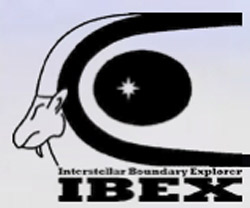Interstellar Boundary Explorer (IBEX)

The Interstellar Boundary Explorer (IBEX) is a space mission, proposed by Southwest Research Institute (SwRI) in San Antonio, to study the interstellar boundary – the region between our solar system and interstellar space. (For more on this boundary, see the entries on heliosphere, heliopause, and termination shock). The Interstellar Boundary Explorer (IBEX) was one of five candidates selected by NASA in November 2003 to compete for two mission slots in NASA's Explorer Program of low cost, rapidly developed scientific spacecraft. IBEX was launched by a Pegasus LV from Kwajalein Missile Range on 19 October 2008.
Details of the IBEX mission
IBEX carries a pair of energetic neutral atom (ENA) "cameras" to image the interaction between the solar system and the interstellar medium – the low-density material between the stars. This interaction has never been directly observed before. Using energetic neutral atom imaging, IBEX will observe the global interactions between the solar wind and interstellar medium for the first time, giving us a much deeper understanding of the Sun's interaction with the Galaxy.
IBEX also will study galactic cosmic rays, energetic particles from beyond the solar system that pose a health and safety hazard for humans exploring beyond Earth orbit. It will make these observations from a highly elliptical orbit that takes it beyond the interference of the Earth's magnetosphere. David McComas of SwRI will lead IBEX. The cost of the mission is approximately $134 million.
For IBEX, SwRI is partnering with other flight hardware developers Orbital Science Corporation, Los Alamos National Laboratory, Lockheed Martin Advanced Technology Center, Goddard Space Flight Center, the University of New Hampshire, and the Johns Hopkins Applied Physics Laboratory. In addition, the team includes a number of US and international scientists from universities and other institutions, as well as the Adler Planetarium, which is leading education and public outreach for the mission.
Other candidate missions
In addition to IBEX, NASA selected, in 2003, the Normal-incidence Extreme Ultraviolet Spectrometer (NEXUS), led by the Goddard Space Flight Center; the Dark Universe Observatory (DUO), led by Carnegie-Mellon University; the Nuclear Spectroscopic Telescope Array (NuSTAR), led by the California Institute of Technology; and the Jupiter Magnetospheric Explorer (JMEX), led by the University of Colorado, for further study. Each team received $450,000 to conduct a five-month concept study, after which NASA evaluated the program content and technical, schedule and cost feasibilities of the proposals. Along with IBEX, NASA then chose to continue studying NuSTAR. This is the first telescope capable of detecting black holes in the local universe with 1,000 times more sensitivity than previous missions sensitive to energetic X-rays. A decision on proceeding to flight development with NuSTAR will be made by early 2006.


